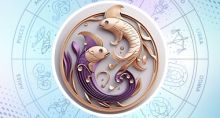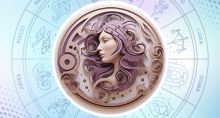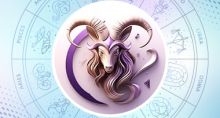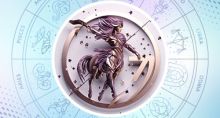How to Perform Rama Navami Pooja at Home
Rama Navami is a major festival that celebrates the birth anniversary of Lord Rama, a popular deity in Hindu religion. Rama is an incarnation/avatar of Lord Vishnu, who is one of the Trimurti or holy trinity of Hinduism. He took this avatar to restore Dharma on earth. Rama was born as the son of King Dasaratha and Queen Kausalya.
The Ramayana epic narrates the story of Rama and his feats. Rama was born after Dasaratha performed a Yagna for progeny blessings, as he had no children. However, just before becoming the crown prince, he had to go into a 14-year exile to honor his father’s promise to Kaikeyi, his stepmother, who wanted to see her son, Bharat, on the throne. The heartbroken Dasaratha died soon after. Meanwhile, Bharat refused to become the king of Ayodhya. He agreed only to rule the kingdom in Rama’s name until his brother returned from exile.
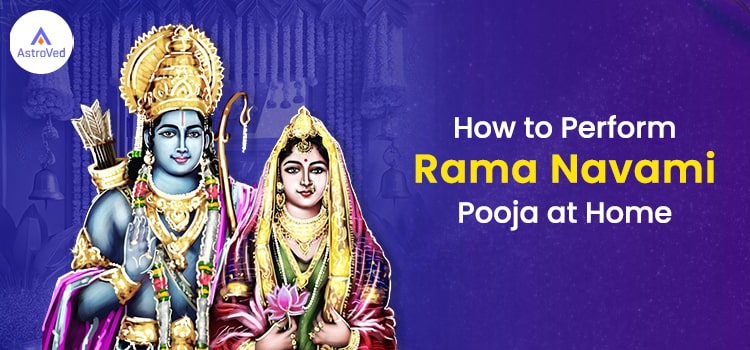
While living in the forest, along with his brother Lakshmana and his wife Sita, Rama encountered Shoorpanaka, the sister of Ravana, the demon king of Lanka. When she insisted on marrying Rama, Lakshmana cut off her nose.
Invoke Rama on his Birthday for Protection, Prosperity and Victory Blessings
On hearing of his sister’s humiliation, Ravana took revenge by abducting Sita. Rama crossed the ocean to reach Lanka, waged battle against Ravana, and rescued Sita. In this task, he was helped immensely by the armies of monkeys and bears led by Hanuman and Jambavan, respectively.
Vishnu incarnated as Rama when he saw the demon king of Lanka, Ravana, growing in power and creating problems on earth. Due to Ravana’s evil deeds, Lord Brahma received many complaints from the other Devas (gods). However, Ravana had a boon whereby no god could kill him.
As only a human being could kill Ravana, Vishnu decided to be born as Rama on earth and save it from the demon. Rama is Maryadha Purushottam, the ideal man. He is a perfect son, ideal brother, wonderful husband, and a just king. His birthday falls on the ninth day after the new moon in Shukla Paksha (the waxing lunar period) in Chaitra month.
Rama Navami celebrations commence from the first day or Pratipada in Chaitra (March-April). Devotees read the Ramayana and sing Bhajans and kirtans.
The statue of Rama is decorated beautifully. During the nine days of the festivities, people recite Ramaraksha stotra 11 times a day with a sankalpa for prosperity. On Navami, the ninth day, there is a special Bhajan. In some temples, a coconut draped in a cloth is kept in a cradle. This represents infant Rama. Devotees also shower chandan, flowers, and gulaal on it. Many observe a day-long fast.
Places like Ayodhya (Uttar Pradesh), Bhadrachalam (Telangana), Rameshwaram (Tamil Nadu), and Sitamarhi (Bihar) are renowned for Rama Navami celebrations. In some regions, devotees also organize Rath-yatras or chariot processions. Fairs are also held.
Rama Navami Pooja
It is customary to perform a Pooja on Rama Navami in many Hindu homes as well as temples. Many people also observe a fast on this day. During the Pooja, devotees consume sattvik food. Devotees also offer worship at temples and listen to stories from the Ramayana. Bhajans are also sung. If the Pooja is at home, clean the home well. You also need idols or pictures of Rama. Some also keep idols of Lakshman, Sita, and Hanuman on the dais during the Pooja. Flowers, sweets, and incense sticks are usually offered to the deity. After the Pooja is over, you can perform Aarti and sprinkle holy water on the people present.
Pooja Samagri for Rama Navami
- A wooden chowki
- Fresh yellow cloth for covering the chowki
- An idol or photo of Rama
- Haldi/Turmeric
- Chandan
- Kumkum
- Akshat (rice grains)
- Tulsi leavesFlowers
- Flowers
- Different fruits
- Kalava/Mauli
- Janeu (sacred thread)
- A coconut
- Paan and supari
- Banana
- A brass lamp
- Oil or ghee and cotton wicks
- Dhoop (Incense sticks)
- Camphor
- Trays for arranging the items and a small plate for performing Aarti
- Dakshina
- For Panchamrit - Banana or mishri, ghee, curd, honey, and raw milk
Rama Navami Pooja Vidhi
- Offer salutations to Lord Ganesha and begin the Pooja.
- Invoke Ganesha’s blessings and begin Rama's Pooja.
- Do Dhyanam (meditation).
- Seek Rama's grace and request him to accept your offerings.
- Next, do Avahanam. Offer prayers to Rama and place the photo or idol of Rama on a wooden platform covered with a yellow cloth. This is called Asanam.
- Light an oil or ghee lamp.
- Next, do Padya. Offer water to Rama’s feet, and then offer Arghya. Next, offer kalava or a piece of fresh cloth, janeu, Haldi, Chandan, Kumkum, flowers, Tulsi leaves and Panchamrit. Chant Vishnu Sahasranamam and offer incense sticks and Tamboolam (consisting of coconut with its husk, paan, supari, fruits, bananas, and Dakshina).
- Perform Aarti and end the Pooja.
Invoke Rama on his Birthday for Protection, Prosperity and Victory Blessings










